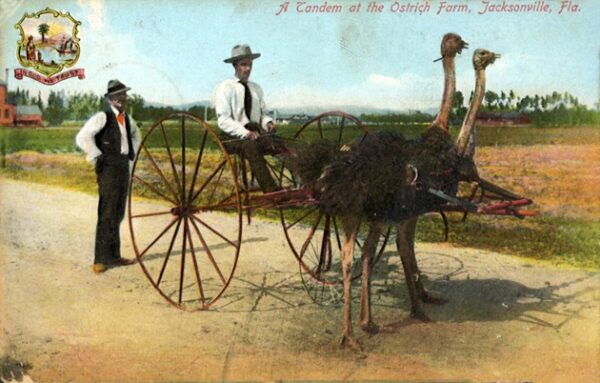
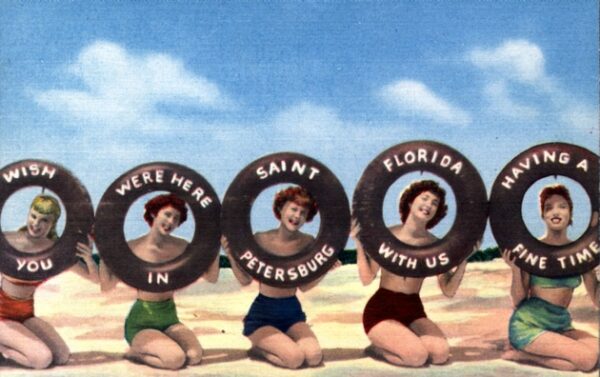
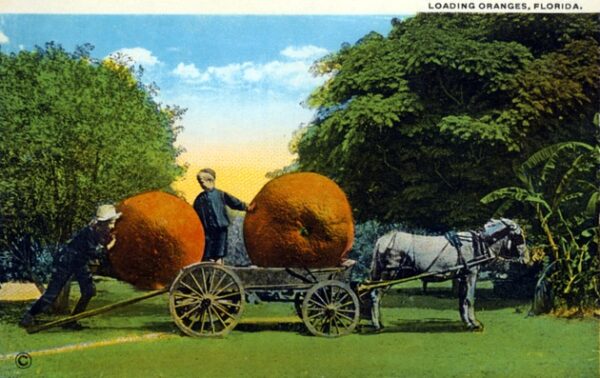
Ramblings and webcomics from LeEMS




A few years ago I was inspired to overhaul my closet. I wanted to alter things that, with a little change, could be made more wearable. I wanted to weed out things that stood in the way of me finding the pieces I like to wear. And, I wanted to make sure I had a ready supply of outfits that made me feel powerful, playful, and attractive. I wanted my daily attire to delight me, to become a special part of my day instead of simply a necessary one.
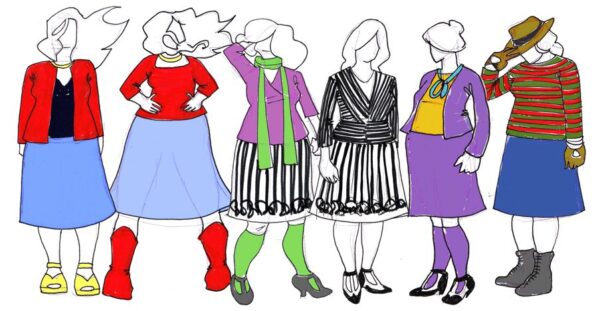
And then I was introduced to Disneybounding by the various YouTubers I was watching. Disneybounding, to my understanding, is creating an outfit that evokes your favorite Disney character without overstepping Disney’s regulations on adult costumes, or even wearing something that looks like a costume. Relatedly, historybounding involves dressing to evoke a fashion period from the past, either by dressing in vintage or reproduction styles or by creating an outfit that resembles them.
The best part of everyday cosplay is that it includes completely normal everyday clothing. I just needed to obtain some key items for my wardrobe to make sure I had pieces to put together an outfit I thought evoked the character I had in mind. For instance, I already had a red and green striped shirt so all I felt I really need to evoke Freddy Kruger were some brown gloves. I obtained some snazzy black and white wingtip-esque t-strap shoes as the final pieces for a Joker outfit. Otherwise, creating the outfits just challenged me to think about the pieces in my closet a little differently – like I was pulling markers from a box to color in a character.
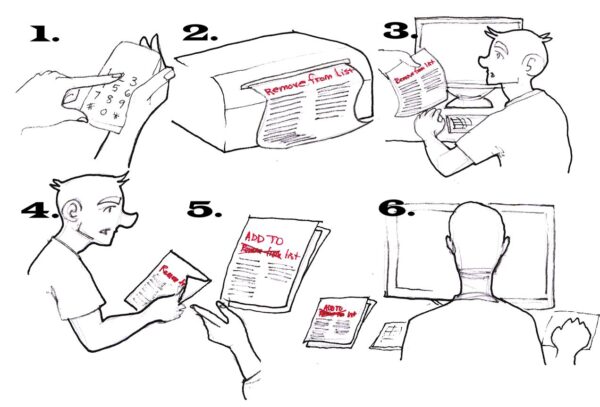
I have been both searching for, and working on, the perfect honey cake recipe for some time now. I love honey, especially the flavor varietals produced by honey from certain plants and locations. But I don’t love how heavy honey cakes can be, thus the search. So far, I have come up with a pretty good recipe for small cakes:
INGREDIENTS
360 for 30 minutes if in muffin molds
Originally had a 1/2 c of vegetable oil in with a 1/2 c of apple sauce, but the last time I made them I used a whole cup of apple sauce and forgot the oil – they came out wonderful. And by wonderful I mean, they were light and springy, admittedly a little sticky to the touch on the outside, but not heavy like many honey cakes can be.
I also gave this recipe a try recently:
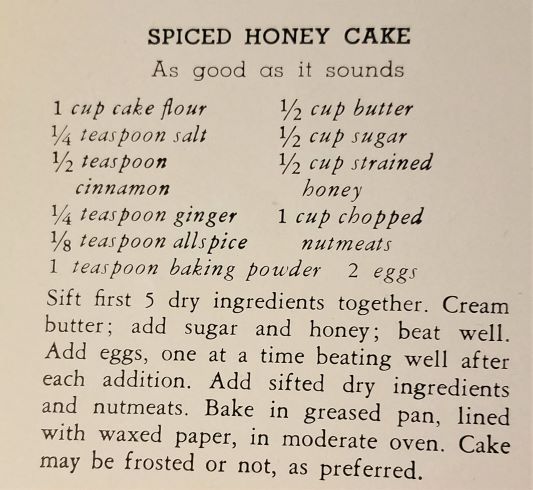
I also gave the Spiced Honey Cake recipe from a 1938 “Season to Taste” baking pamphlet. It too was not overly heavy, but it didn’t taste as strongly of honey. The lack of heaviness and honey flavor were both probably due to only 1/2 cup of honey.
I haven’t gotten a lot of art up on the site this year and I am late in celebrating the birthday of my dear blog. Happy 15 years, Bean! And, Happy New Year to y’all. Thanks for sticking around. Here’s the doodlin I got out this year:
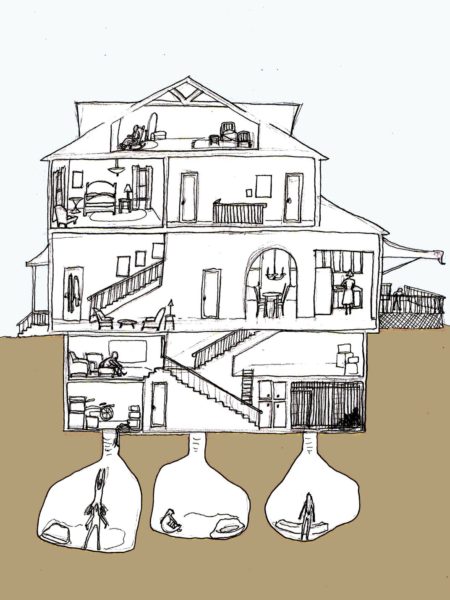
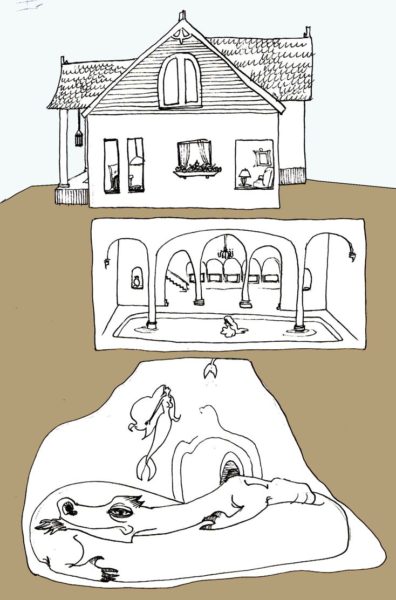
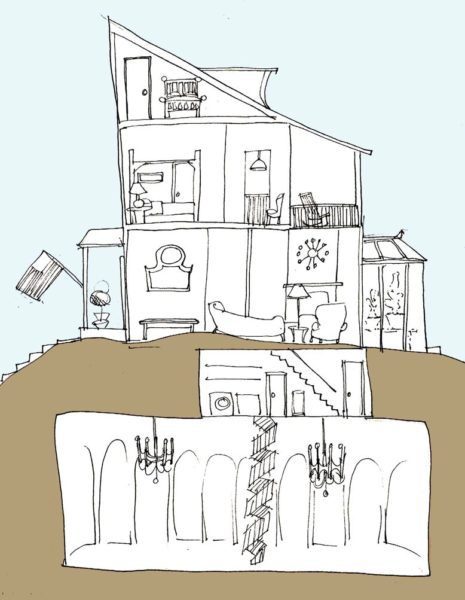
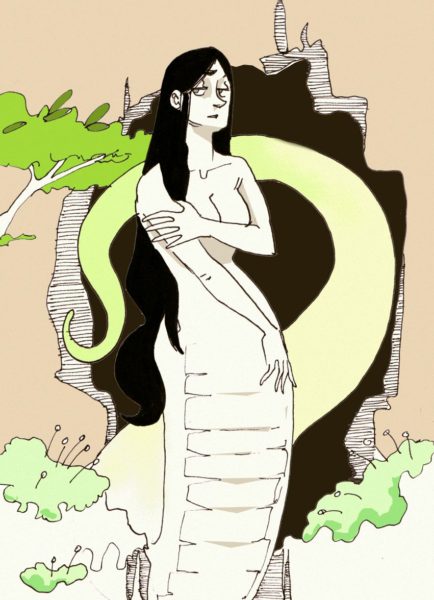
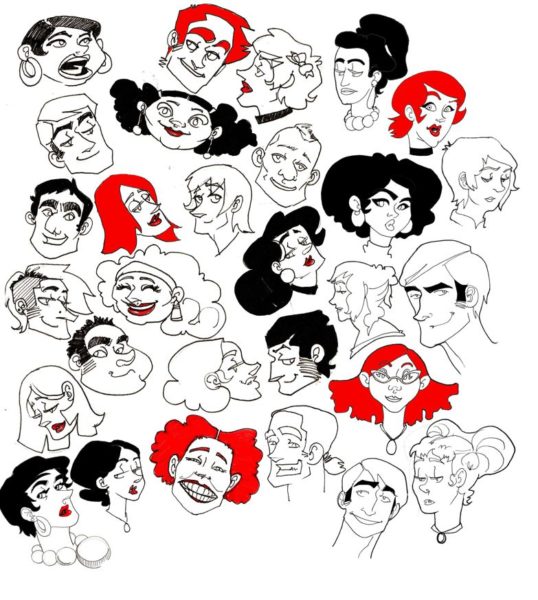
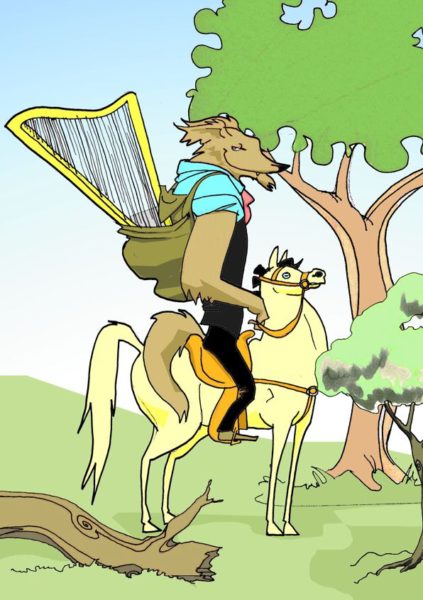

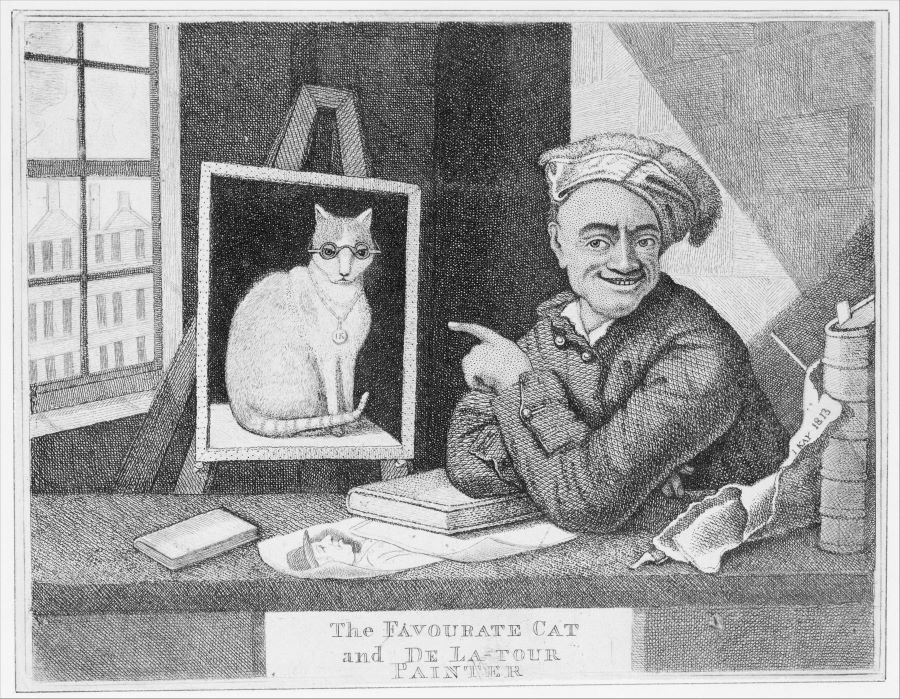
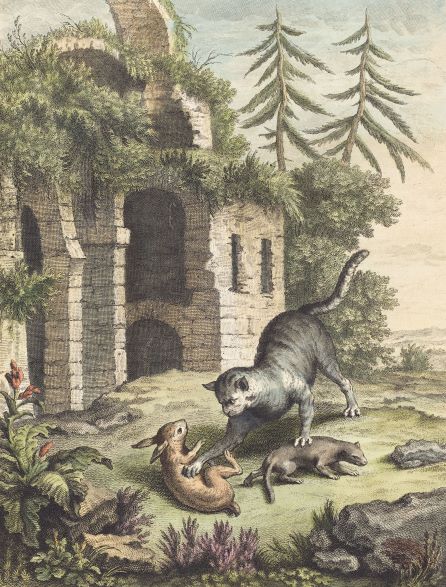

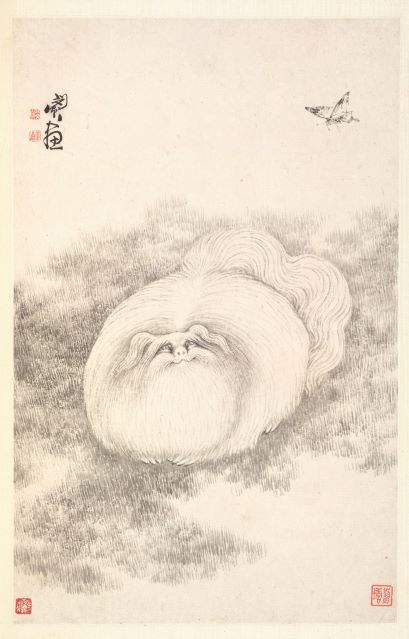
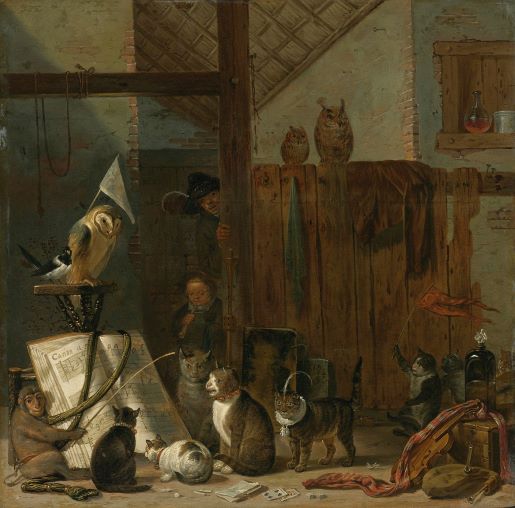
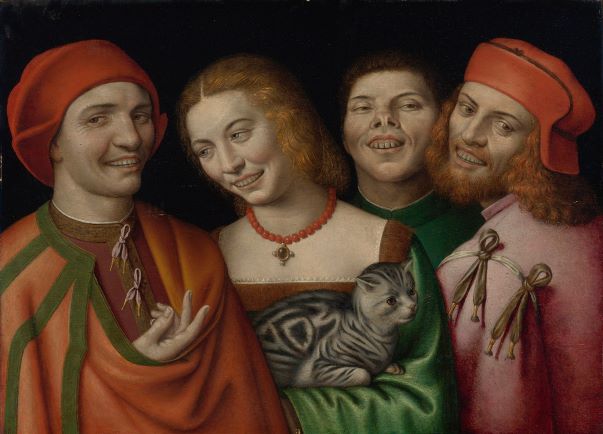
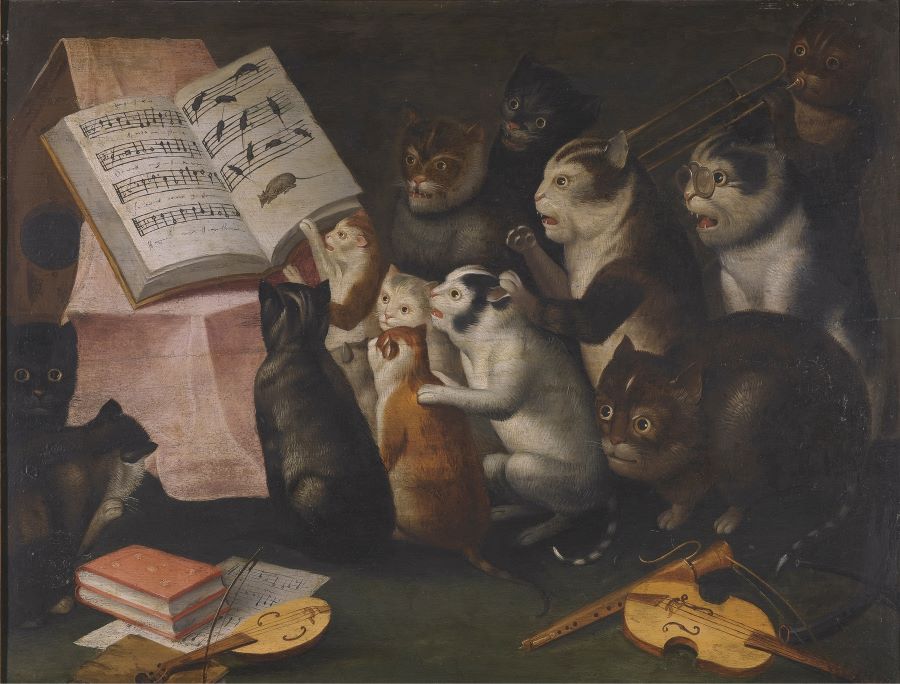

It’s been a while since I worked up an Every Month is ____ History Month post. Truth is, I got rather stalled on Pearl Bailey. The more information I found on her, the more I became completely fascinated, and nothing I found was quite enough. Unlike many other personalities that no-one I know seems to remember, Pearl Bailey wrote quite a bit about her life. I can’t tell you how excited I was to find out she had penned her own memoirs and social commentary. Suddenly, only her own words would do. I acquired a few of her books and, unfortunately, they got added to my to-read shelves. And, that is where the research post ended, until now.
No, I haven’t finished reading her biography (the one I picked up). I have read through Hurry Up America and Spit (1976), and I am currently picking through Pearl’s Kitchen (1973). The song on our Christmas mix, ‘Five Pound Box of Money’ by Pearl Bailey is just too good not to share now, and since I have got enough information for a basic biographical sketch, I figured why keep waiting. I am now a confirmed Pearl Bailey fan. I’m not going to have any trouble revisiting this great lady in another post once I have read about her story in her own words.
Pearl Baily was born in 1918 in Newport News, Virginia to Reverend Joseph James and Ella Mae Ricks Bailey (Pearl Bailey, 2022). Her brother, Bill Bailey was well known on the vaudeville stage. In a later article, Bailey recounted how she stumbled accidentally into show business by way of what sounded like a sibling spat. She had been sent to the theater to fetch her brother, who was rehearsing his dance act. He brushed her off and sent her home, so she returned, entered, and won the amateur contest that night. She was just fifteen (Pearl Bailey is serious about ambition to teach, 1956). After some time on vaudeville stages and touring the country with the USO during WWII, she made her Broadway debut in St. Louis Woman in 1946 (Pearl Bailey, 2022) to excited and complimentary reviews (Pearl Bailey’s easy style clicks on Broadway, 1946).
“The way I sing is the way I live,” Miss Bailey says…”What I do is like telling a story to music, it’s got to be something that brings a chuckle. The audience enjoys it because it tells of things they know.”
– Pearl Bailey (Pearl Bailey’s easy style clicks on Broadway, 1946)
Early on, she would describe herself as a writer when speaking with reporters and critics. Throughout a very successful career entertaining on stage, through which she was often featured in newspapers, she would carefully craft and plan her shows based on her projections of what the audience would be (Pearl Bailey’s next role, 1956). By 1956 she declared a desire to follow her long time dream of becoming a teacher, taking classes at UCLA towards that ambition (Pearl Bailey is serious about ambition to teach, 1956). She would later earn a degree in theology from Georgetown University, but before this she published several books (Pearl Bailey, 2022):
Somewhat satisfyingly, her achievements and greatness were awarded many times over during her lifetime. She was appointed special ambassador to the United Nations by President Gerald Ford; she received a Special Tony Award for the title role in the all-black production of Hello, Dolly!; she won a Daytime Emmy award; she was the first African-American to receive the Screen Actors Guild Life Achievement Award; she received the Presidential Medal of Freedom; and she was awarded the Bronze Medallion, the highest award conferred upon civilians by New York City (Pearl Bailey, 2022). Pearl Bailey died at the age of 72 from arteriosclerosis (Pearl Bailey, 2022).
There is so much more that I haven’t covered here and, I promise, I will get to it. But for now, enjoy a little Christmas:
I have an unfinished project tracking fruitcake recipes through newspaper clippings that calls to me. To get me in the mood to revisit it, and to get you in the mood for the holidays, here are some choice clippings of the theft, poison, and murder with which fruitcake has been associated.
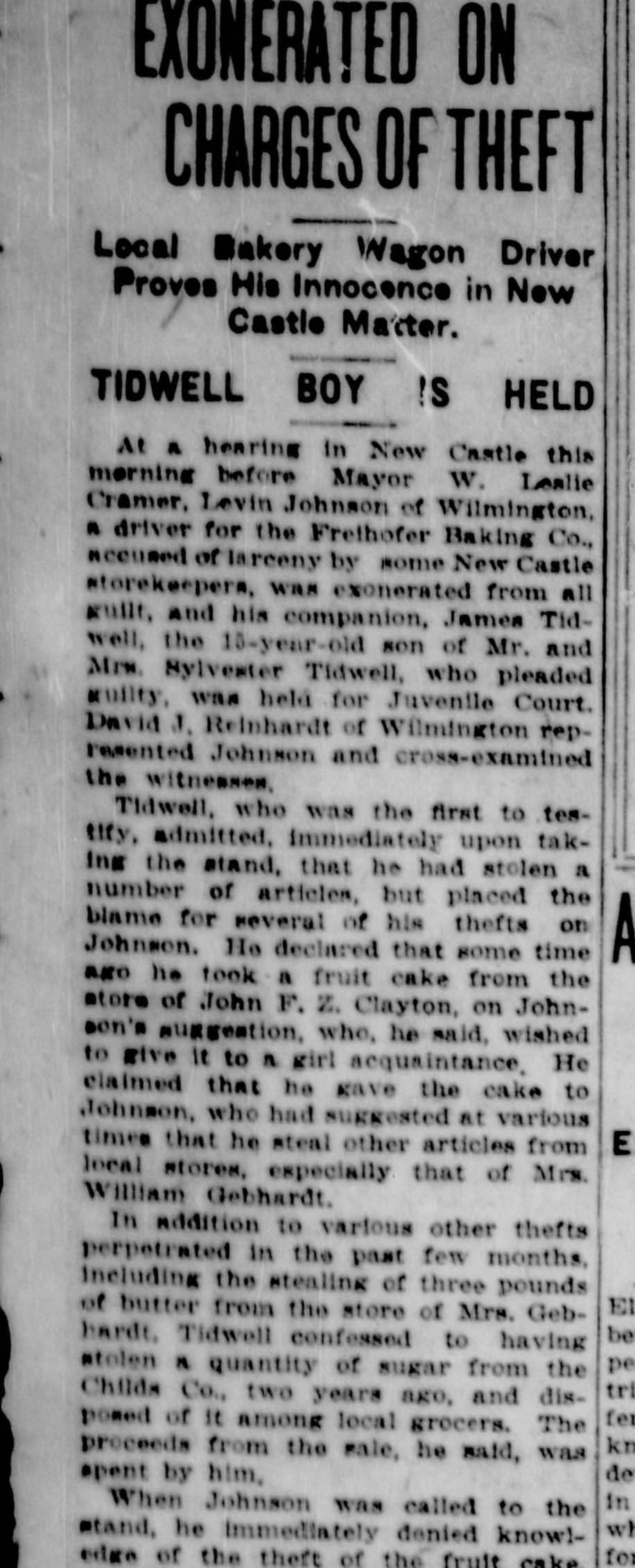

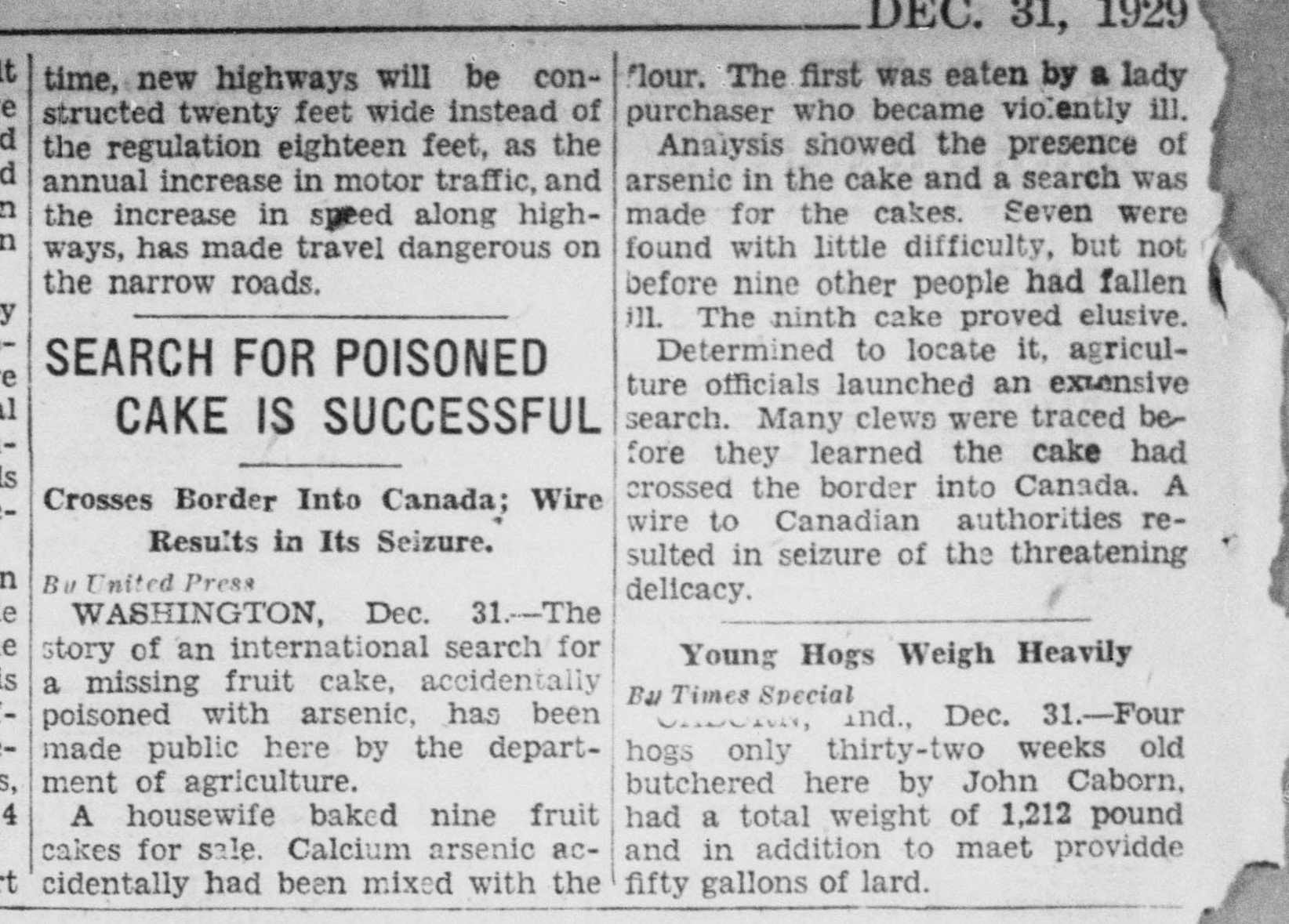
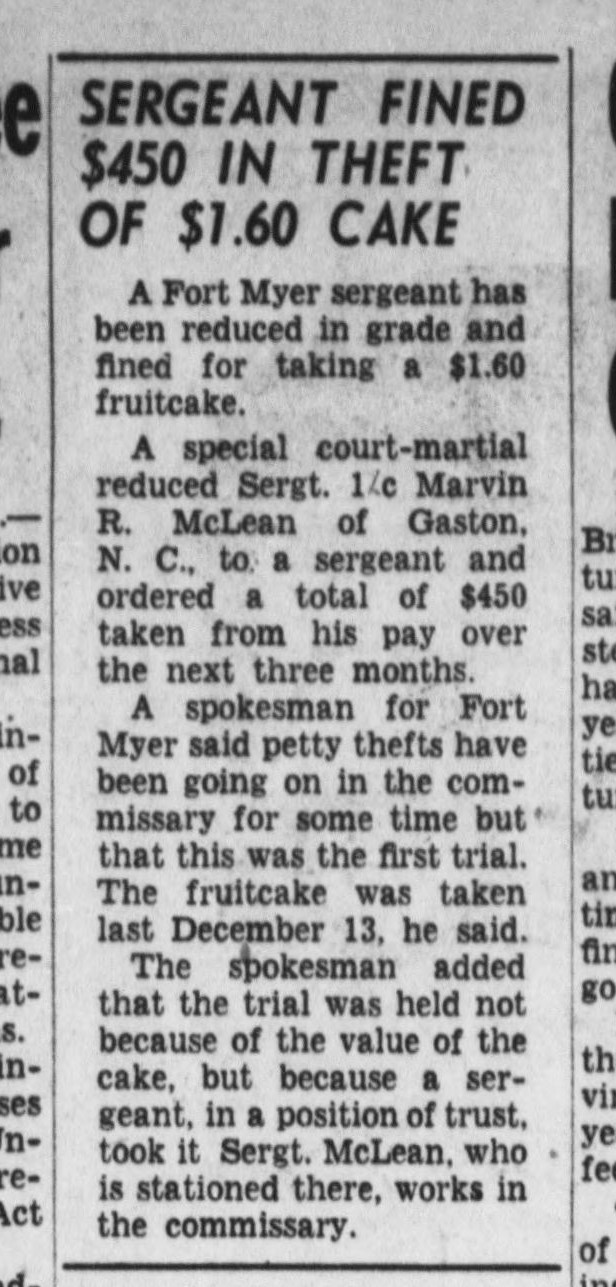
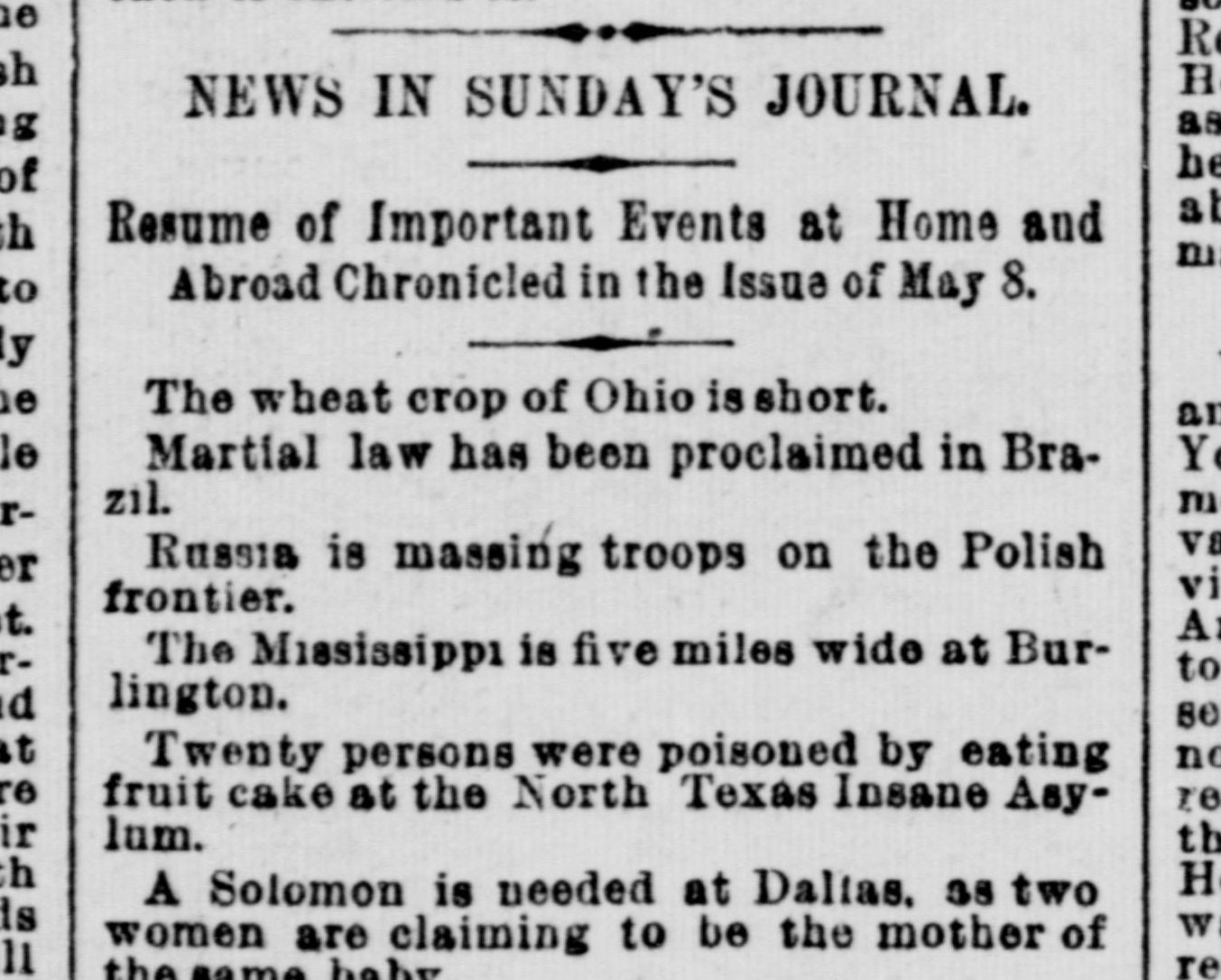
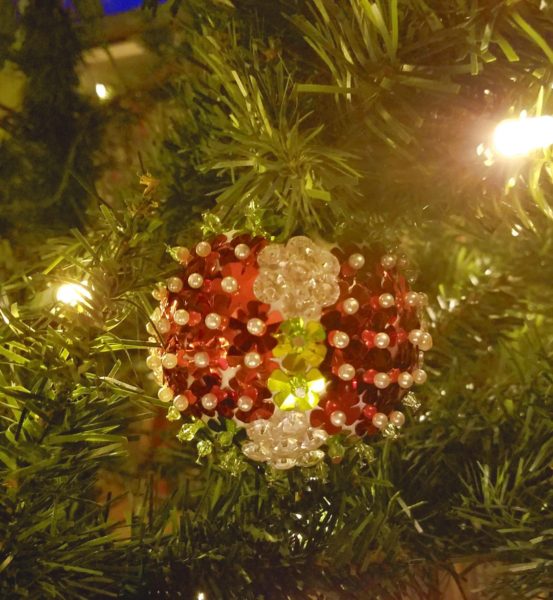
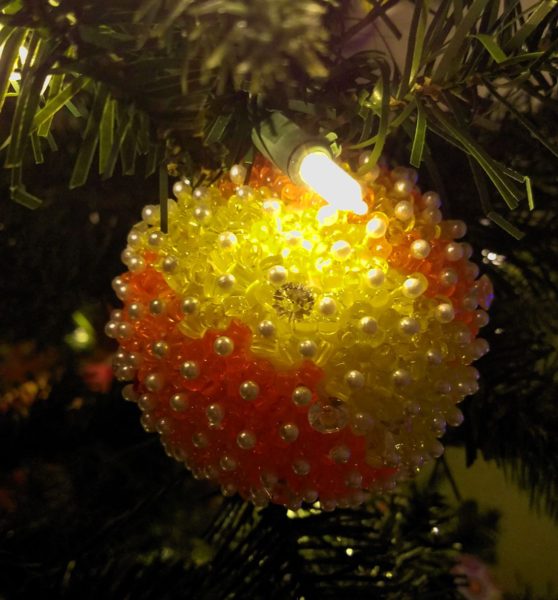
I have a lovely pony bead and pin ornament that my grandmother made long ago and it inspired me to try my hand at this holiday craft. All that is needed is a Styrofoam ball, straight pins, Pony beads, and patience.
Pony beads or three-cornered beads are still obtainable online, perhaps even in your local craft store. I quickly found out that my general flat head pins would not hold the bead in, so I focused primarily on using pearl head pins to affix the beads to the Styrofoam. I also picked up some crystal headed pins from a wedding supplies shop and wanted to do a disco ball like ornament but soon found that longer needle length is not a good thing in this craft. They end up competing for space inside the foam ball and eventually no more pins can be added.
These are light weight for having pretty decent visual impact and are very meditative to do in the evening.
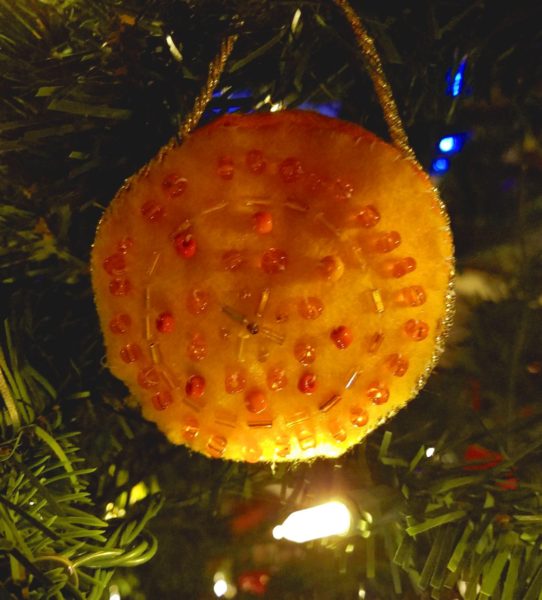
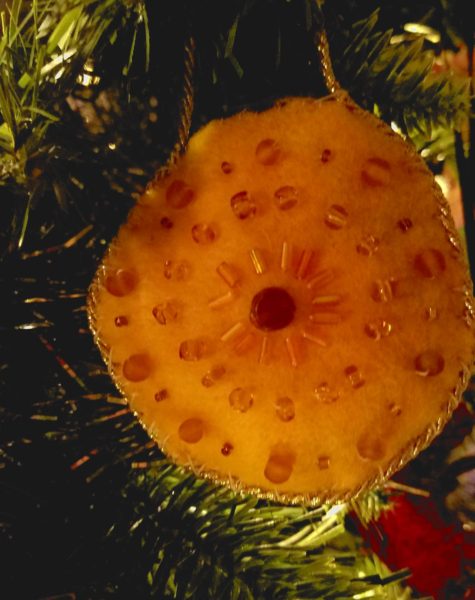
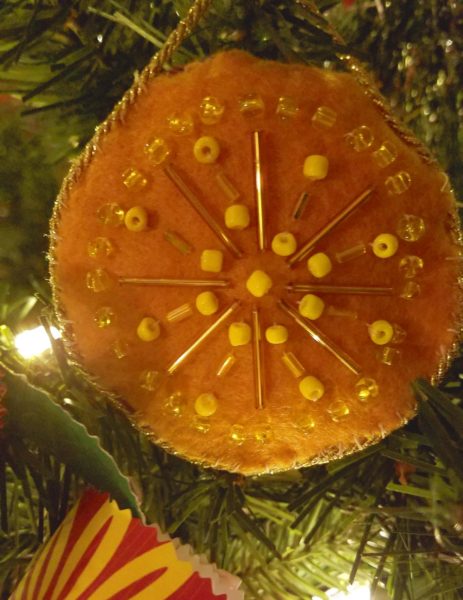
The next set of ornaments that I tried my hand at were inspired by a picture my friend sent from an Indy shop: stuffed and beaded soft ornaments. I think the inspiration was a shinier tighter weave, but I thought felt would hold it’s shape nicely. I based my designs on the sun in honor of solar holidays like Saturnalia and Yule, celebrating the sun on the shortest day of the year. In the end, they kind of ended up looking like cookies though.
This is also a very meditative craft. I got to use up a bunch of beads in my closet and I stuffed the ornaments lightly with the felt scraps from cutting out the circles. I also put a clove bud in each one for a hint of holiday smells.
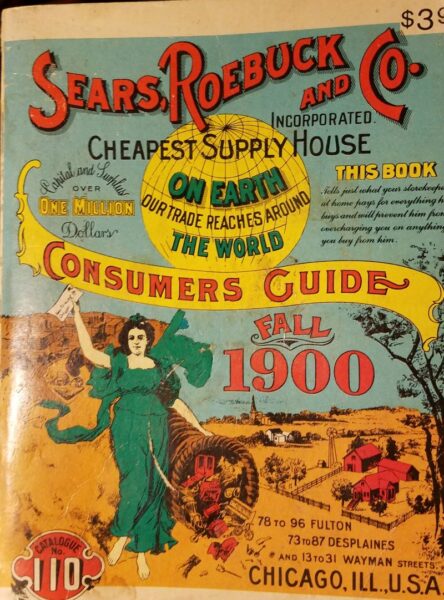
Do I need to introduce why I may have picked up a ‘mini’ sized reprinting of the fall 1900 Sears, Roebuck and Co. Consumers Guide, or why I am prone to acquiring similar aged magazines and catalogs? My inclination isn’t necessarily part of the nostalgic yet enlightened ‘vintage stye, not vintage values’ movement and argument (thought it is one I wholly support) as much as a type of historical voyeurism. I like to look at the pictures.
In any case. I was paging through this little catalog, wondering if I should get reader glasses because of the miniaturized print (the book is about 5×7 in), enjoying the product drawings, when I noticed that among the fabulously technically drawn shoes and chandeliers (a skill I remember from my earliest art education when graphic artists were still schooled in the ways of product drawings and sign painting), were photo-realistic fashion models…at least where their faces were concerned. What happened below their heads was some of the most ridiculous cut and paste manipulations I have seen.
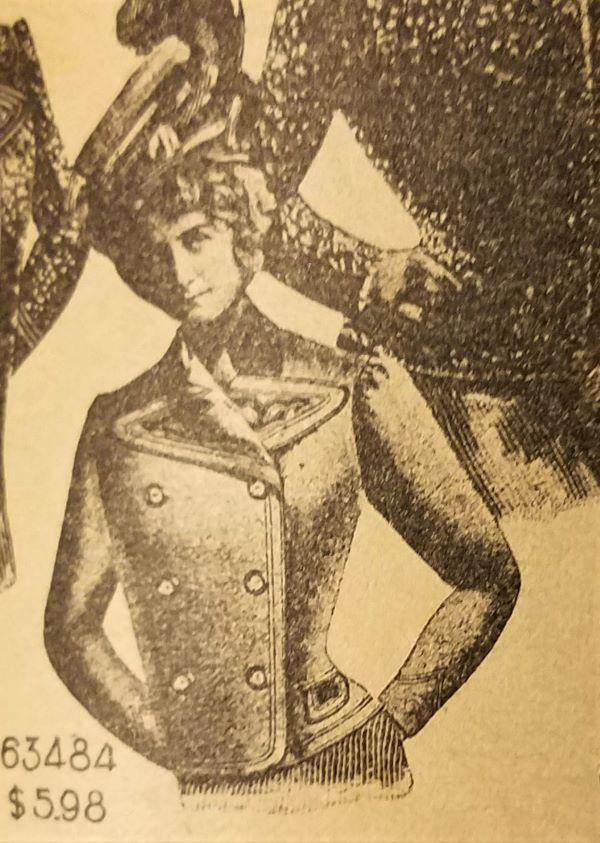
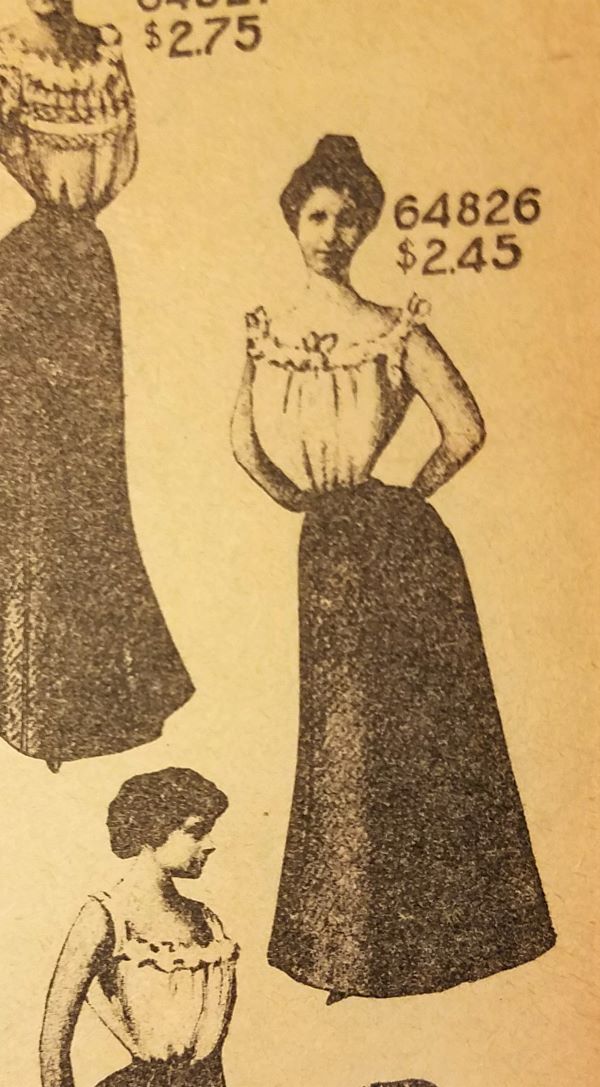
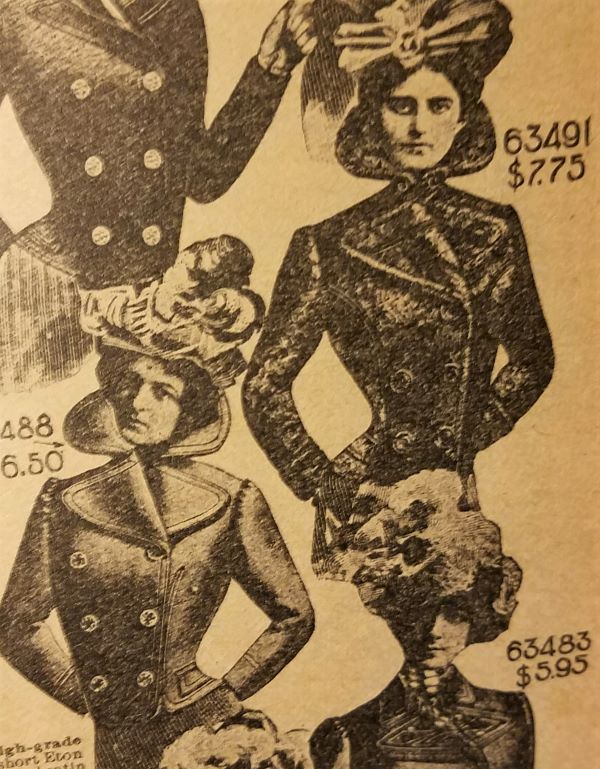
I’ve looked at loads of 1900s post cards, cartoons, and fashion plates, so, at first, I wasn’t even paying attention to the exaggerated wasp wastes that connected pigeon breast and bustle. Clearly the ideal 1900s lady was a bird wolpertinger of the most terrifying! What first captured my disbelief were the coat collars, or specifically, how long a woman’s neck must have been to ensure her head showed up above the coat collar pictured. And then, the bird like illusion of woman was only more emphasized when her head cocked strangely to one side without affecting the length or rigidness of her neck and the collar that held it hostage!
I hope you enjoy the little ogle at absurdity as much as I did.
Hello! I hope y’all’s Halloween was as lovely as mine! As the first of the feasting holidays (in my house), I busied myself making seasonally appropriate meals with in-season foods and baking. One of the bakes I have been slowly perfecting for myself is barmbrack. The recipe I have is rather old and super spare so I went online to find something a little easier to get a good product out of.
What I found was a lot of recipes for yeast-less ‘barmbrack.’ That sounded great and much easier, but then I found this post by the Irish American Mom pointing out what is and is not actually barmbrack. I love her soap-box (delivered in a completely enjoyable way) and the history she provides on this bake, so I wanted to make sure and share in case anyone else is becoming as obsessed with variations on fruitbread/fruitcake as I am.
This is a tiny taste of the playlist the Schmidts have going all October (sorry to share so late). Happy Halloween, y’all!
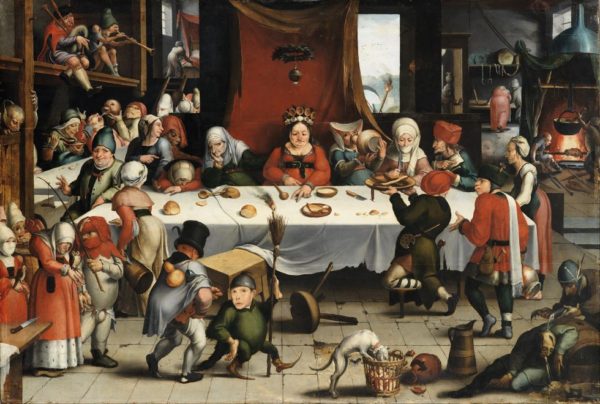
You see before you a picture that seems to be depicting a wedding feast. I say seems to be, because the title of the picture doesn’t say anything about a wedding. But, the order of those seated, the unhappy lady in the center, in front of a red cloth, wearing a crown with a wreath over her head are all reminiscent of other pictures from the same period that showed wedding feasts. This is ‘Burlesque Feast’ by Frans Verbeeck. This picture pulls you in and drags you down. It conjures up torrents of questions that seasoned art historians may be able to answer quickly, but maybe even the experts wouldn’t know. Allow me to show you around…
First, a little background. Frans Verbeeck (1510-1570) came from a family of important artists in Mechelen, in the province of Antwerp in the Flemish Region of Belgium. According to Wikipedia it is not always possible to attribute work to one or another of the Verbeeck family, but at least three paintings have been attributed specifically to Frans Verbeeck who lived in the middle of the 16th century.
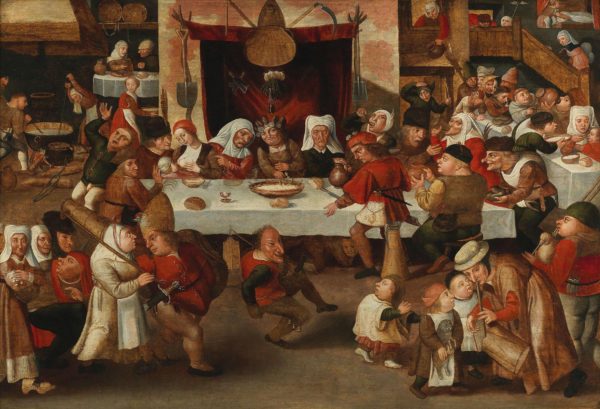
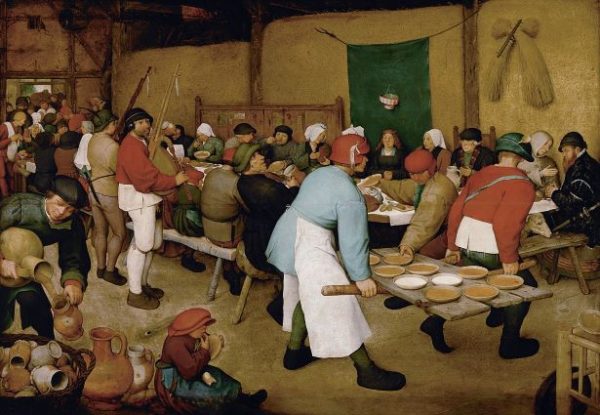
Burlesque Feast is not Frans Verbeeck’s most noted work. I found much more attention paid to The Mocking of Human Follies, and there is another feast picture attributed to Frans Verbeeck called ‘Peasant Wedding’ that looks very similar in composition albeit less strange. It is almost like ‘Burlesque Feast’ is making fun of ‘Peasant Wedding.’ And Verbeeck’s ‘Peasant Wedding’ in turn, almost seems to be making fun of Bruegel the Elder’s ‘Peasant Wedding’.
Plenty of analysis has gone into Bruegel the Elder’s ‘Peasant Wedding’ that can help us figure out what is going on in the other two pictures, even though the customs are unknown to us. For instance, the lady sitting in front of the green cloth, wearing a crown with a ‘crown’ suspended over her head is the bride. So, the characters similarly positioned in Verbeeck’s ‘Peasant Wedding’ and also in ‘Burlesque Feast’ are also brides, or playing the part of one.
Back to ‘Burlesque Feast.’ Go ahead and open the link to the large image on Wikimedia commons and get deep in there. Do you notice how the bride in front of the red cloth, wearing a crown that appears to be made of spoons and broken egg shells, under a wreath that hangs from the ceiling, looks so utterly unhappy? Maybe she looks so sad because her groom is the fellow in the bottom right retching into the corner? But her emotional state and his apparent drunkenness are nothing compared to other things happening in the picture.
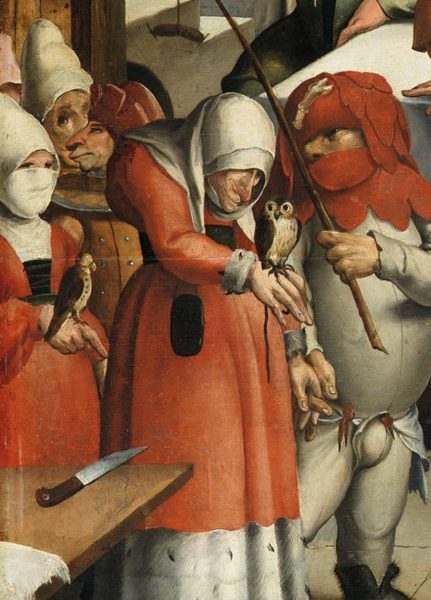
Coming in on the bottom left of the picture we see a procession of hooded figures seemingly lead by an elderly lady. From the ermine trim on her clothes and the owl on her hand – as well as the falcon on the hand of the lady behind her – I am guessing that these are quite well-to-do individuals. Falconry being a past-time of the rich. Perhaps these are the wealthy members of the town coming to give their blessing to the unhappy bride? But, look how odd and hunched the old lady is. Why is she so crooked. And why is there an unsheathed knife pointed at her on the table to her side? In Dutch still life painting, a popular art of the same time, a knife left carelessly on the table is a sign of betrayal. Is the old wealthy lady betrayed or the betrayer?
Owls in the middle ages were alternately seen as symbols of the devil or classically as representations of wisdom. Which could it be here?
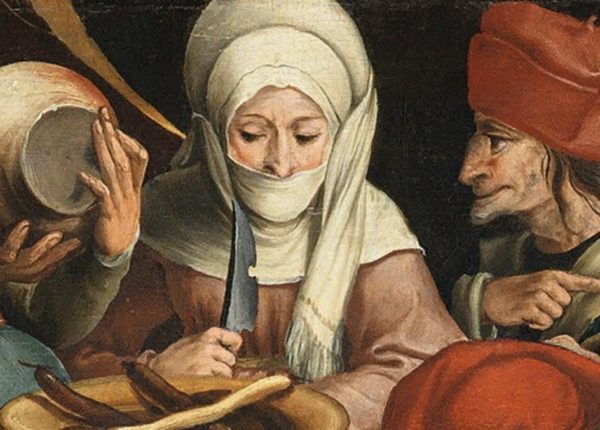
This lady, to the right of the bride (from our view), why does she look as though she is psyching herself up to stab a body? Is it the man who leans closely in to talk with her that has pushed her to this point of anger or the woman chugging from a jug on her other side? Or, is it just that she is dismayed her knife has a big ole’ nick out of the blade?
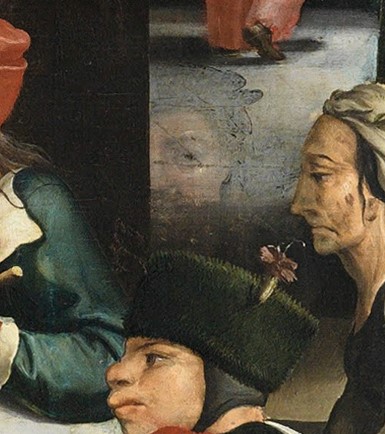
And further right, on the other side of the man that leans in closely, is a ghostly image of a man who is not there. He stares directly at the audience and is, in fact one of only two characters in this whole picture that do engage with the audience directly. Is this a mistake of the digitization process, or the painting actually have this ghostly image in it? If in the painting, it seems oddly deliberate. I know many paintings were painted on top of previous compositions, but this doesn’t look like an under-layer peeking through to me. If anything, it looks like the impression you might get if you had two printouts face to face in a folder for too long and a little of one gets stuck onto the other.
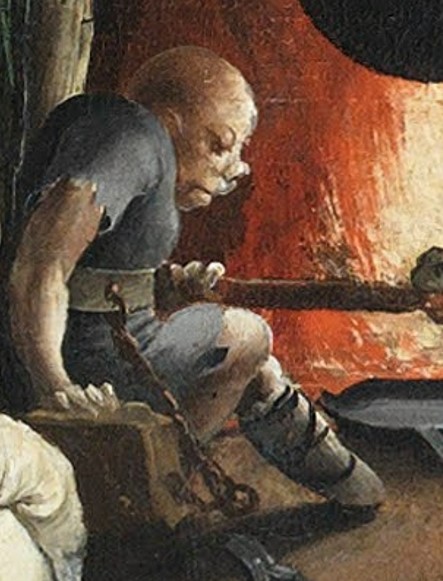
Further back in the room on the right side of the painting, a bald creature with a pig like nose tends a spit that cooks a cow head over the fire. That could be odd enough on its own, but as I looked at the figure, trying to see if he was missing a foot or it was just turned to the side (I vote for turned), I noticed that he is chained to a block. Slavery was present in Europe in the middle ages and there were also some interesting punishment devices, so is this creature enslaved or is it being punished?
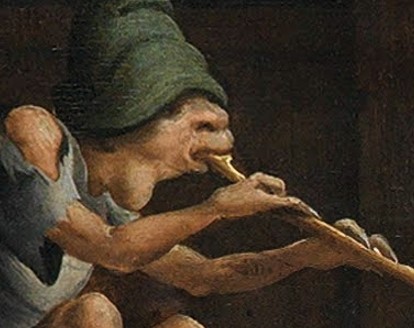
His is not the only face that is more creature-like than human-like. Up in the left hand corner, among other musicians playing for the feast is a flute player who looks, to me, like a lizard with a goiter. At first I was thinking that classifying some of the characters of the picture as creatures was a little harsh, but a closer look at the lizard like flute player reveals that he only has to fingers on each hand.
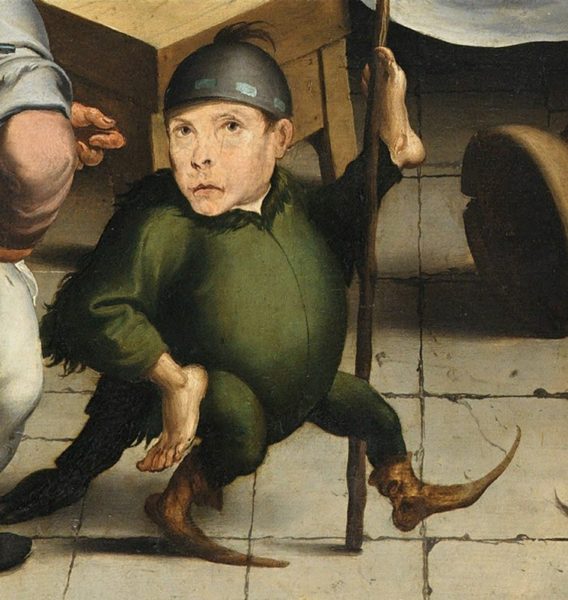
And finally, the most obvious but easy to overlook creature is front and center, across the table from the bride and the second character who engages us directly, or maybe the first. He has feet for hands, and, perhaps, a tail? I could also mention that he brandishes an upturned broom that holds a lit candle – something that is not safe in the least – but why dwell on that when he has feet for hands?
When I started looking at the other wedding pictures, I did notice in Verbeek’s ‘Peasant Wedding’ this spot in the picture is taken by a small jester-like human character. This is really what got me thinking that ‘Burlesque Feast’ was poking fun at ‘Peasant Wedding.’ The more I looked at Verbeek’s ‘Peasant Wedding’ I wondered if it was poking fun at Bruegel the Elder’s ‘Peasant Wedding.’ Bruegel’s picture was dated to 1567. I could not find if Verbeek’s pictures had been dated, but Verbeek and Bruegel were contemporaries, so I imagine some painterly teasing is possible.
The training/maintenance regimen of these women athletes was and is astounding! And, this video is when the ‘mermaids’ wore masks most of the time and didn’t wear binding mermaid tails.